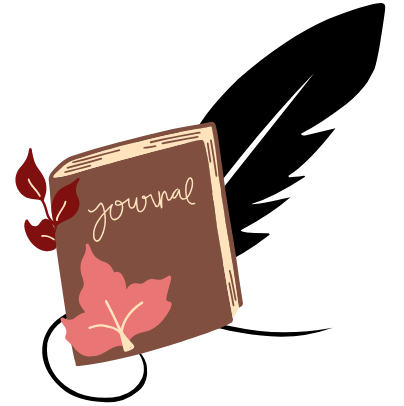Self-improvement journaling has been a cornerstone of personal development for centuries. From ancient philosophers to modern-day thought leaders, the practice of putting pen to paper has proven to be a powerful catalyst for growth and transformation.
As someone who has experienced the profound impact of journaling firsthand, I’m excited to share advanced techniques, potential pitfalls, and strategies to maximize it’s effect on your life.
The Science Behind Self-Improvement Journaling
Self-improvement journaling is grounded in cognitive-behavioral therapy (CBT) and positive psychology principles.
By externalizing our thoughts and emotions through writing, we create a tangible record that allows us to observe patterns, challenge limiting beliefs, and foster a growth mindset.
Dr. James Pennebaker, a pioneer in expressive writing research, has demonstrated that regular journaling can lead to improved immune function, reduced stress levels, and enhanced emotional well-being.
A study published in the Journal of Experimental Psychology found that writing about future goals can significantly reduce anxiety and improve performance on goal-related tasks.
Advanced Journaling Techniques for Personal Growth
While traditional journaling methods like free writing and gratitude lists are valuable, several advanced techniques can elevate your self-improvement practice:
1. Future Self Visualization
Future self visualization involves vividly describing your ideal future self in detail. This powerful technique creates a clear mental image of your aspirations, making them feel more attainable and motivating you to take action towards achieving them.
To apply future self visualization:
- Set aside 15-20 minutes in a quiet space.
- Close your eyes and imagine yourself 5, 10, or 20 years in the future, having achieved your goals.
- Write a detailed description of this future self, including your surroundings, achievements, relationships, and emotional state.
- Reflect on the steps needed to bridge the gap between your current self and your future vision.
2. Shadow Work Journaling
Inspired by Carl Jung’s concept of the “shadow self,” shadow work journaling involves exploring and integrating the hidden or repressed aspects of your personality. While challenging, this technique can lead to profound insights and personal growth.
To practice shadow work journaling:
- Identify a trigger or negative emotion you’ve experienced recently.
- Write freely about the situation, allowing yourself to express all thoughts and feelings without judgment.
- Look for patterns or recurring themes in your writing.
- Reflect on how these hidden aspects of yourself might be influencing your behavior and relationships.
- Consider ways to combine and accept these shadow aspects, rather than suppressing them.
3. Cognitive Restructuring Journaling
Based on CBT principles, cognitive restructuring journaling helps you identify and challenge negative thought patterns, replacing them with more balanced and constructive ones.
To apply cognitive restructuring in your journaling practice:
- Identify a negative thought or belief you’re struggling with.
- Write down evidence that supports and contradicts this belief.
- Analyze the validity of the evidence objectively.
- Craft a more balanced, realistic thought to replace the original negative one.
- Reflect on how this new perspective changes your emotional response and potential actions.
Overcoming Common Pitfalls in Self-Improvement Journaling
While journaling can be incredibly beneficial, it’s essential to be aware of potential pitfalls:
Rumination
Excessive focus on negative experiences or emotions can lead to increased anxiety or depression. To avoid this, set time limits for journaling sessions and balance problem-focused writing with solution-oriented reflection.
Perfectionism
The pursuit of the “perfect” journal entry can prevent you from writing regularly. Remember, progress is the goal, not perfection.
Lack of Action
Journaling should complement, not replace, taking action towards your goals. Use your insights as a springboard for real-world changes.
Privacy Concerns
If you’re worried about others reading your journal, consider using a password-protected digital app or keeping your physical journal in a secure location.
Adapting Your Journaling Practice
As you progress in your self-improvement journey, it’s crucial to adapt your journaling practice to meet your evolving needs:
- Experiment with different formats: Try combining written entries with sketches, mind maps, or collages to engage different parts of your brain.
- Incorporate prompts: Use thought-provoking questions or writing prompts to explore new areas of personal growth.
- Review and reflect: Regularly review past entries to track your progress and identify recurring themes or challenges.
- Combine techniques: Mix and match different journaling methods to create a personalized approach that works best for you.
From Basics to Mastery: Building on Your Journaling Practice
As you become more comfortable with basic journaling techniques, you can start incorporating more advanced practices to deepen your self-awareness and speed up personal growth:
Meta-Cognitive Journaling
Meta-cognitive journaling involves reflecting on your thought processes and decision-making patterns to gain insight into your cognitive biases and mental habits.
This practice can help you become more aware of how you think and make decisions, leading to better problem-solving skills and more intentional choices.
To practice meta-cognitive journaling:
- Choose a recent decision or problem you faced.
- Write about the steps you took to arrive at your conclusion or solution.
- Analyze the thought processes behind each step.
- Identify any biases or assumptions that may have influenced your thinking.
- Reflect on how you could approach similar situations differently in the future.
Values Clarification
Using your journal to explore and define your core values ensures your goals and actions align with what truly matters to you. This practice can help you make more fulfilling decisions and live a more authentic life.
To clarify your values through journaling:
- List 10-15 values that you believe are important to you.
- For each value, write about why it’s significant and how it manifests in your life.
- Rank the values in order of importance.
- Reflect on how well your current life aligns with your top values.
- Brainstorm ways to better incorporate your core values into your daily life and long-term goals.
Habit Tracking
Incorporating elements of bullet journaling to watch and improve your daily habits and routines can lead to significant personal growth over time. Habit tracking allows you to visualize your progress and identify areas for improvement.
To start habit tracking in your journal:
- Choose 3-5 habits you want to develop or break.
- Create a simple grid with days of the month on one axis and habits on the other.
- Mark off each day you successfully finish (or avoid) the habit.
- At the end of each week, reflect on your progress and any challenges you faced.
- Adjust your approach as needed based on your observations.
Emotional Intelligence Development
Using your journal to analyze your emotional responses and develop strategies for better emotional regulation can significantly improve your relationships and overall well-being.
To enhance your emotional intelligence through journaling:
- Describe a recent emotional experience in detail.
- Identify the specific emotions you felt and their intensity.
- Reflect on what triggered these emotions and any underlying beliefs or past experiences that may have influenced your reaction.
- Consider how you expressed (or suppressed) these emotions and the impact on yourself and others.
- Brainstorm choice ways you could have responded to the situation.
Exercises to Enhance Your Self-Improvement Journaling Practice
To help you combine these advanced techniques into your journaling routine, try the following exercises:
The “Three Selves” Exercise
Write entries from the perspective of your past, present, and future selves, exploring how your experiences and aspirations have evolved over time.
This exercise can provide valuable insights into your personal growth and help you align your current actions with your long-term goals.
Past Self: Write a letter to your current self from the perspective of your younger self (e.g., 5 or 10 years ago). What were your dreams, fears, and expectations?
Present Self: Respond to your past self’s letter, explaining how life has unfolded and what you’ve learned along the way.
Future Self: Write a letter from your future self (e.g., 5 or 10 years from now) to your present self. What advice would you give? What accomplishments are you proud of?
The “Alternate Reality” Challenge
Describe how your life might be different if you had made a different major decision in the past. This exercise can help you gain perspective on your current situation and future choices.
- Choose a significant decision point in your past.
- Write about the path you didn’t take, imagining how your life would have unfolded.
- Compare this alternate reality to your current life, noting both positive and negative differences.
- Reflect on the lessons you can draw from this comparison and how they might tell future decisions.
The “Gratitude Upgrade”
Instead of simply listing things you’re grateful for, take a closer look by exploring why you’re grateful for them and how they’ve impacted your life. This deeper exploration can enhance the positive effects of gratitude practice.
- Choose three things you’re grateful for today.
- For each item, write about:
- Why you’re grateful for it
- How it has positively impacted your life
- The people or circumstances that contributed to you having this in your life
- How you can show appreciation or pay it forward
The “Fear Deconstruction” Technique
Identify a fear or limiting belief, then systematically break it down by questioning it’s origins, validity, and potential outcomes if you were to overcome it. This exercise can help you challenge and overcome mental barriers to your personal growth.
Write down a fear or limiting belief you hold and do the following:
Explore it’s origins: When did you first develop this fear? What experiences contributed to it?
Question it’s validity: What evidence supports this fear? What evidence contradicts it?
Imagine overcoming it: What would your life look like if you no longer held this fear?
Develop an action plan: What small steps can you take to challenge this fear?
The “Weekly Review and Preview”
At the end of each week, reflect on your accomplishments, challenges, and lessons learned. Then, set intentions and plan for the upcoming week, aligning your short-term actions with your long-term goals.
- Review the past week:
- List your accomplishments, big and small
- Reflect on challenges you faced and how you handled them
- Identify key lessons or insights you gained
- Preview the upcoming week:
- Set 3-5 main goals or priorities
- Break these goals down into actionable steps
- Identify potential obstacles and plan how to overcome them
- Schedule specific times for important tasks or self-care activities
Maximizing the Impact of Your Journaling Practice
To get the most out of your self-improvement journaling, consider the following strategies:
Create a Consistent Routine
Establishing a regular journaling habit is crucial for long-term success. Choose a time of day that works best for you, whether it’s first thing in the morning, during your lunch break, or before bed.
Aim to journal at least 3-4 times a week to maintain momentum and see significant results.
Experiment with Different Mediums
While traditional pen and paper journaling works well for many, don’t be afraid to explore digital options or even audio journaling.
Some people find that typing allows for faster idea flow, while others prefer the tactile experience of handwriting.
Try different methods to find what resonates with you.
Practice Mindfulness While Journaling
Before you begin writing, take a few deep breaths and center yourself. This can help you tap into your thoughts and emotions more effectively.
As you write, try to stay present and focused, avoiding distractions or multitasking.
Be Honest and Vulnerable
The most profound insights often come from being completely honest with yourself. Your journal is a safe space for self-expression, so don’t hold back.
Write about your fears, insecurities, and mistakes as well as your dreams and successes.
Use Prompts and Questions
When you’re feeling stuck or want to explore a specific area of your life, use journaling prompts or thought-provoking questions. These can help stimulate reflection and guide your writing in new directions.
Combine Journaling with Other Personal Growth Practices
Integrate your journaling practice with other self-improvement techniques such as meditation, goal-setting, or therapy. Use your journal to reflect on insights gained from these practices and track your progress over time.
Celebrate Your Progress
Regularly review your past entries to acknowledge how far you’ve come. Celebrate your growth, no matter how small, and use these observations to motivate further progress.
Overcoming Common Challenges in Self-Improvement Journaling
Even with the best intentions, you might come across obstacles in your journaling practice. Here are some common challenges and strategies to overcome them:
Writer’s Block
If you’re struggling to get started, try:
- Setting a timer for 5 minutes and writing without stopping, even if it feels nonsensical
- Using a random word generator and writing about how it relates to your life
- Describing your current surroundings or physical sensations in detail
Lack of Time
If you’re struggling to find time to journal:
- Start with just 5 minutes a day and gradually increase
- Keep your journal with you and jot down thoughts during spare moments throughout the day
- Combine journaling with another daily habit, like your morning coffee or evening wind-down routine
Feeling Overwhelmed
If you feel overwhelmed by your thoughts or emotions while journaling:
- Take breaks as needed and practice self-care
- Focus on writing about one specific aspect of a situation rather than trying to address everything at once
- Use structured journaling techniques like lists or mind maps to organize your thoughts
Fear of Discovery
If you’re worried about others reading your journal:
- Use code words or symbols for sensitive topics
- Keep your journal in a secure location or use a password-protected digital app
- Practice self-censorship only if absolutely necessary, but remember that honesty with yourself is crucial for growth
The Long-Term Benefits of Self-Improvement Journaling
Consistent journaling practice can lead to numerous long-term benefits:
Enhanced Self-Awareness
Regular self-reflection through journaling helps you understand your thoughts, emotions, and behaviors on a deeper level. This increased self-awareness can lead to better decision-making and more authentic living.
Improved Emotional Regulation
By processing your emotions through writing, you can develop better emotional regulation skills. This can lead to reduced stress, anxiety, and depression, as well as improved overall mental health.
Clearer Goal Setting and Achievement
Journaling about your aspirations and progress can help you set clearer, more achievable goals. It also provides a record of your progress, allowing you to celebrate successes and learn from setbacks.
Enhanced Creativity and Problem-Solving Skills
Regular writing can stimulate creativity and improve your ability to think critically and solve problems. You may find yourself generating new ideas and perspectives more easily.
Better Communication Skills
As you become more adept at expressing yourself in writing, you may find that your verbal communication skills improve as well. This can lead to better relationships and professional opportunities.
Increased Resilience
By reflecting on past challenges and how you overcame them, you build resilience and confidence in your ability to handle future obstacles.
Greater Sense of Purpose and Meaning
Through exploring your values, experiences, and aspirations in your journal, you can develop a stronger sense of purpose and meaning in life.
People Also Asked
How often should I journal for self-improvement?
Aim to journal at least 3-4 times a week for optimal results. Consistency is more important than duration, so even 5-10 minutes per session can be beneficial if done regularly.
What’s the best time of day to journal?
The best time to journal is whenever you can consistently fit it into your schedule. Many people prefer morning journaling to set intentions for the day, while others find evening journaling helpful for reflection.
Can journaling help with anxiety and depression?
Yes, research has shown that regular journaling can help reduce symptoms of anxiety and depression by providing an outlet for processing emotions and challenging negative thought patterns.
Is it better to journal by hand or digitally?
Both methods have their advantages. Handwriting can be more engaging and may improve memory retention, while digital journaling offers convenience and searchability.
Choose the method that feels most comfortable and sustainable for you.
How can I make journaling a habit?
To make journaling a habit, try:
- Setting a specific time and place for journaling each day
- Starting with small, achievable goals (e.g., 5 minutes per day)
- Linking journaling to an existing habit (e.g., after your morning coffee)
- Using reminders or habit-tracking apps
- Finding an accountability partner or joining a journaling group
What should I write about in my self-improvement journal?
Topics for self-improvement journaling can include:
- Daily reflections on experiences and emotions
- Progress towards personal goals
- Gratitude lists
- Challenges faced and lessons learned
- Future aspirations and plans
- Personal values and beliefs
- Self-discovery exercises and prompts
How can I overcome writer’s block when journaling?
To overcome writer’s block:
- Use journaling prompts or questions
- Start with stream-of-consciousness writing
- Describe your current surroundings or physical sensations
- Review past entries for inspiration
- Write about a recent experience or interaction
Is it normal to feel emotional while journaling?
Yes, it’s completely normal and often beneficial to experience emotions while journaling. This emotional release can be an important part of the self-reflection and healing process.
How long should my journal entries be?
There’s no set length for journal entries. Some days you may write several pages, while other days a few sentences might suffice.
Focus on quality and authenticity rather than quantity.
Can journaling replace therapy?
While journaling can be a powerful tool for self-improvement and emotional processing, it’s not a substitute for professional therapy. Journaling can complement therapy but should not replace it, especially for serious mental health concerns.
Key Takeaways
- Self-improvement journaling is a powerful tool for personal growth, backed by scientific research.
- Advanced techniques like future self visualization, shadow work, and cognitive restructuring can deepen your journaling practice.
- Be aware of potential pitfalls such as rumination and lack of action, and take steps to avoid them.
- Adapt your journaling practice to meet your evolving needs and experiment with different formats and techniques.
- Use specific exercises to enhance your self-awareness and speed up personal growth through journaling.




